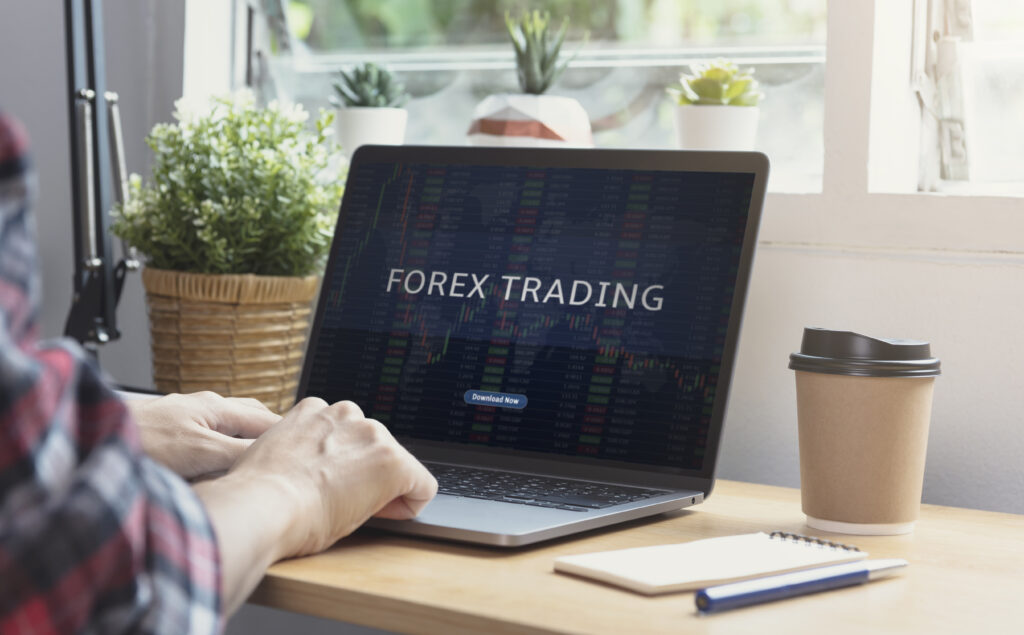Introduction
The world of forex (foreign exchange) trading has long been associated with wealth, opportunity, and financial prosperity. It’s a vast market where currencies from different countries are bought and sold, creating the potential for significant gains. However, what’s often overlooked is the profound impact forex markets have on other sectors of the global economy, including the luxury goods market.
In this comprehensive article, we will explore how forex markets are fueling the boom in the global luxury goods market. We will delve into the mechanisms through which currency fluctuations and forex trading activities influence the luxury industry. Furthermore, we will examine the wealth potential unlocked by the synergy between these two markets.
The Global Luxury Goods Market: An Overview
Before we delve into the intricate relationship between forex markets and the luxury goods industry, it’s essential to understand the scope and significance of the luxury market itself.
A. Defining Luxury Goods
Luxury goods encompass a wide range of products and services characterized by their superior quality, exclusivity, and often, high price points. These can include luxury fashion, watches, jewelry, automobiles, fine dining, travel experiences, and more.
B. The Growth of Luxury
The luxury goods market has experienced remarkable growth over the past few decades. Increasing disposable incomes, expanding middle and upper classes, and evolving consumer preferences have all contributed to the expansion of the luxury industry.
The Forex Market: Catalyst for Change
The forex market, as the world’s largest financial market, wields immense influence on the global economy. Its actions and fluctuations reverberate across industries, and the luxury goods sector is no exception.
A. Currency Exchange Rates
The forex market determines exchange rates, which play a pivotal role in international trade. Fluctuations in currency values can directly impact the affordability and attractiveness of luxury goods for consumers around the world.
B. Export and Import Dynamics
Luxury goods are often manufactured in one country and sold in another. Changes in exchange rates can affect the competitiveness of luxury brands in international markets. A weaker domestic currency can make exports more attractive, while a stronger currency can increase import costs.
The Influence of Forex Markets on the Luxury Goods Sector
Now, let’s explore the specific ways in which forex markets are influencing the luxury goods market.
A. Currency Fluctuations and Luxury Pricing
- The Impact of Weaker Currencies
When a country’s currency weakens relative to others, its luxury goods become more affordable for foreign buyers. This can boost sales for luxury brands based in the weaker currency’s home country.
- The Strong Currency Dilemma
On the other hand, luxury brands based in countries with strong currencies may face challenges. A strong domestic currency can lead to higher prices for luxury goods in international markets, potentially reducing demand.
B. Global Expansion and Forex Considerations
Luxury brands often seek to expand their presence globally. Forex markets can significantly impact the cost of international expansion.
- Currency Hedging
Many luxury brands engage in currency hedging to mitigate the risks associated with currency fluctuations. This involves using financial instruments to protect against adverse exchange rate movements.
- Strategic Expansion
Forex considerations play a role in deciding where to expand. A favorable exchange rate environment can make certain markets more attractive for luxury brands.
Wealth Potential Unlocked by the Synergy
The synergy between forex markets and the luxury goods industry creates wealth potential that benefits various stakeholders, from consumers to investors and luxury brands themselves.
A. Consumer Access to Luxury
- International Shopping
Currency fluctuations allow consumers to access luxury goods from around the world at potentially more affordable prices.
- Luxury Travel
Wealthy travelers often take advantage of favorable exchange rates to enjoy luxury experiences and make high-end purchases while abroad.
B. Investment Opportunities
- Forex Trading
Forex markets provide opportunities for investors to speculate on currency movements and potentially generate significant profits.
- Luxury Stock Investments
Investors can also consider investing in luxury brand stocks, as these companies can benefit from favorable exchange rates and growing global demand.
C. Brand Profitability
Luxury brands that strategically navigate forex market dynamics can increase their profitability by expanding into new markets and optimizing pricing strategies.
Case Studies: Real-World Examples
To illustrate the impact of forex markets on the luxury goods sector, let’s examine a few real-world case studies:
A. Swiss Watches and the Franc
Switzerland is renowned for its luxury watch brands. When the Swiss franc (CHF) strengthened significantly in 2015, it created challenges for Swiss watchmakers. To maintain competitiveness, some brands adjusted their pricing strategies, while others increased their focus on global marketing and digital sales channels.
B. European Luxury Brands and the Euro
European luxury brands, such as those from France and Italy, often grapple with currency fluctuations related to the euro (EUR). When the euro is strong, these brands may face headwinds in international markets. Conversely, when the euro weakens, it can boost their exports and attract tourists seeking luxury shopping experiences in the Eurozone.
C. Chinese Luxury Shoppers and the Yuan
China has emerged as a global powerhouse for luxury consumption. Chinese shoppers often take advantage of favorable exchange rates to purchase luxury goods overseas or through cross-border e-commerce. This trend has prompted luxury brands to adapt their strategies to cater to Chinese consumers, both domestically and internationally.
Strategies for Luxury Brands and Investors
In light of the symbiotic relationship between forex markets and the luxury goods industry, here are strategies for luxury brands and investors to consider:
A. Luxury Brands
- Currency Hedging: Implement currency hedging strategies to mitigate the impact of adverse exchange rate movements.
- Market Diversification: Expand into markets with favorable exchange rates and growing luxury demand.
- Pricing Strategies: Adjust pricing strategies strategically to account for currency fluctuations while maintaining brand exclusivity.
B. Investors
- Forex Trading: Explore forex trading opportunities to capitalize on currency movements.
- Stock Investments: Consider investing in luxury brand stocks, particularly during periods of favorable exchange rates and strong global demand.
The Future of the Luxury Goods and Forex Relationship
As both the luxury goods market and forex markets continue to evolve, their relationship will likely remain robust. Here are some trends and considerations for the future:
A. Digital Transformation: The luxury industry is embracing e-commerce and digital marketing, which may further amplify the impact of forex markets on global sales.
B. Emerging Markets: Growing middle and upper classes in emerging markets will continue to drive demand for luxury goods, potentially leading to new opportunities and challenges for luxury brands.
C. Sustainability: Luxury brands are increasingly focusing on sustainability. This trend may influence currency considerations, as sustainability practices impact production costs and consumer preferences.
Conclusion
The synergy between forex markets and the global luxury goods market is undeniable. Currency fluctuations, exchange rates, and forex trading activities have a profound impact on the luxury industry, influencing consumer access, brand profitability, and investment opportunities.
Unlocking the wealth potential created by this relationship requires a deep understanding of forex dynamics and strategic decision-making by luxury brands and investors. As both markets evolve, their collaboration is likely to continue shaping the luxury goods industry, making it essential for stakeholders to navigate this partnership to their advantage. Whether you’re a luxury shopper, a forex trader, or a luxury brand executive, the interplay between these two worlds presents opportunities to thrive in an increasingly interconnected global economy
Read our latest article on Global Economic Forums
FAQs
Q1: How does currency fluctuation affect the European luxury goods market? A1: Currency fluctuations, such as the appreciation or depreciation of the euro, can impact the cost of production and profitability of European luxury brands. A stronger euro can reduce export competitiveness, while a weaker euro may increase profit margins.
Q2: What role does the Swiss Franc play in the Swiss watch industry? A2: The Swiss Franc is considered a safe-haven currency, and its fluctuations can influence the Swiss watch industry. A stronger Swiss Franc can make Swiss watches more expensive for international consumers, potentially affecting demand.
Q3: How have luxury brands responded to the U.S.-China trade war? A3: Luxury brands have responded to the U.S.-China trade war by reevaluating their supply chains, diversifying markets, and adapting pricing strategies. Some have also implemented risk mitigation measures to navigate the uncertainty.
Q4: What is currency hedging, and why is it important for luxury brands? A4: Currency hedging involves using financial instruments to protect against currency fluctuations. It is crucial for luxury brands operating in international markets to safeguard profit margins and financial stability.
Q5: How do digital currencies like Bitcoin potentially impact the luxury goods market? A5: Digital currencies like Bitcoin may introduce a new means of payment for luxury goods. They could also be viewed as alternative assets, potentially affecting investment patterns in luxury markets.
Q6: Are luxury brands beginning to accept cryptocurrencies as payment? A6: Some luxury brands have started accepting cryptocurrencies as a means of payment. However, the adoption of cryptocurrencies in luxury purchases is still relatively limited and varies by brand.
Q7: How do sustainability and ethical practices influence currency valuations? A7: Currency valuations can be influenced by a country’s commitment to sustainability and ethical practices. Positive environmental, social, and governance (ESG) factors can positively impact a currency’s strength.
Q8: Why is there a growing demand for sustainable luxury? A8: There is a growing demand for sustainable luxury due to increased consumer awareness of environmental and ethical issues. Luxury brands are responding to this demand by incorporating sustainability into their products and business practices.
Q9: How do luxury brands adapt to currency fluctuations when pricing their products? A9: Luxury brands may adjust their pricing strategies to account for currency fluctuations. They may increase or decrease prices in different markets to maintain their brand’s exclusivity and profitability.
Q10: What can luxury industry stakeholders and forex market participants learn from the relationship between forex markets and luxury goods? A10: Understanding the relationship between forex markets and luxury goods is essential for stakeholders in both sectors to make informed decisions and strategies. It allows them to navigate currency-related challenges and capitalize on opportunities in a dynamic global marketplace.
Click here to read more on Global Luxury Goods




